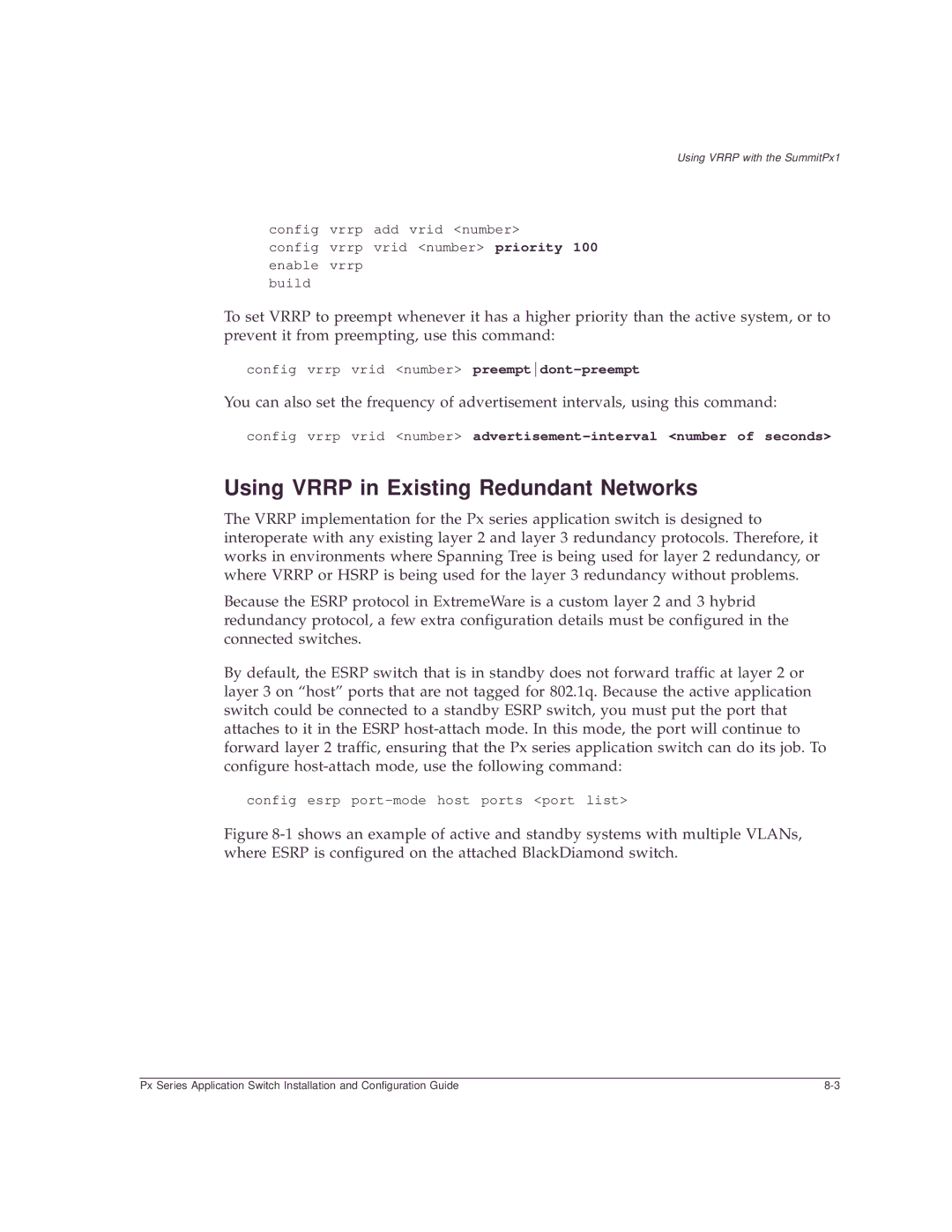Using VRRP with the SummitPx1
config vrrp add vrid <number>
config vrrp vrid <number> priority 100
enable vrrp
build
To set VRRP to preempt whenever it has a higher priority than the active system, or to prevent it from preempting, use this command:
config vrrp vrid <number>
You can also set the frequency of advertisement intervals, using this command:
config vrrp vrid <number>
Using VRRP in Existing Redundant Networks
The VRRP implementation for the Px series application switch is designed to interoperate with any existing layer 2 and layer 3 redundancy protocols. Therefore, it works in environments where Spanning Tree is being used for layer 2 redundancy, or where VRRP or HSRP is being used for the layer 3 redundancy without problems.
Because the ESRP protocol in ExtremeWare is a custom layer 2 and 3 hybrid redundancy protocol, a few extra configuration details must be configured in the connected switches.
By default, the ESRP switch that is in standby does not forward traffic at layer 2 or layer 3 on “host” ports that are not tagged for 802.1q. Because the active application switch could be connected to a standby ESRP switch, you must put the port that attaches to it in the ESRP
config esrp
Figure 8-1 shows an example of active and standby systems with multiple VLANs, where ESRP is configured on the attached BlackDiamond switch.
Px Series Application Switch Installation and Configuration Guide |
